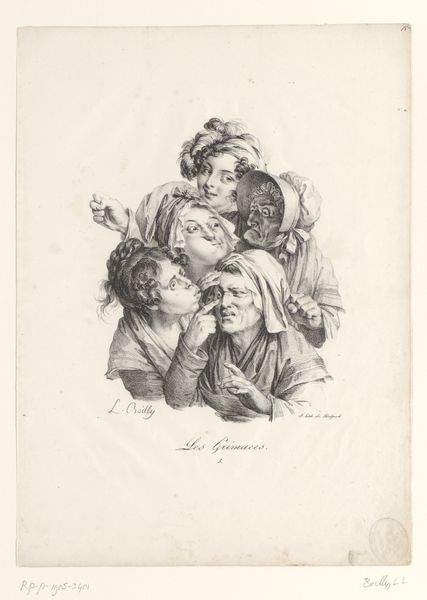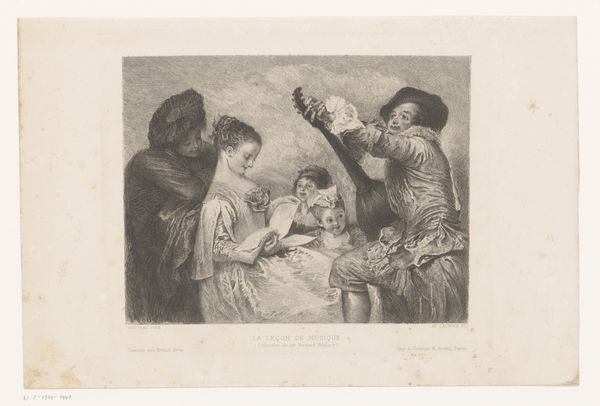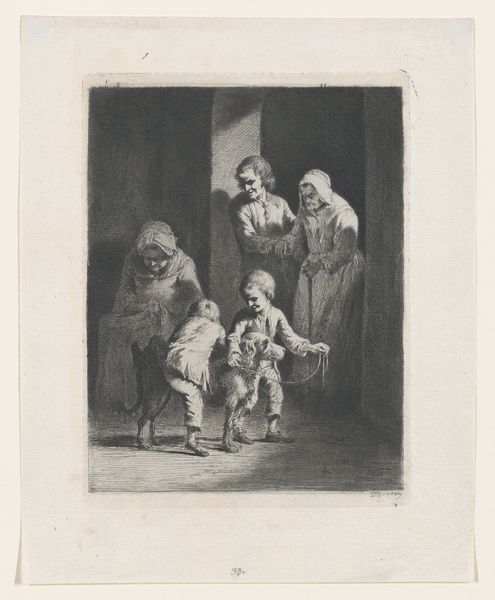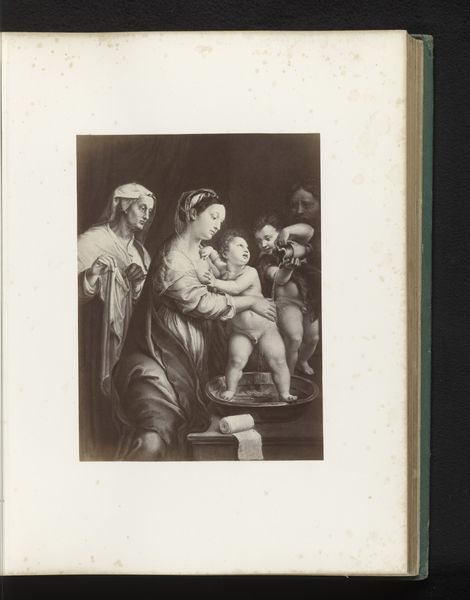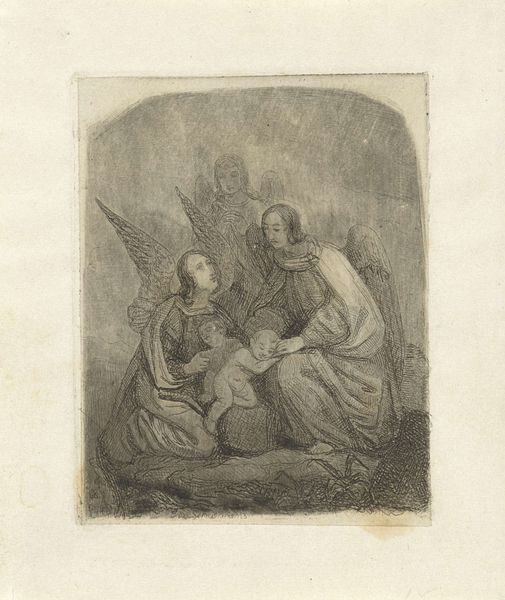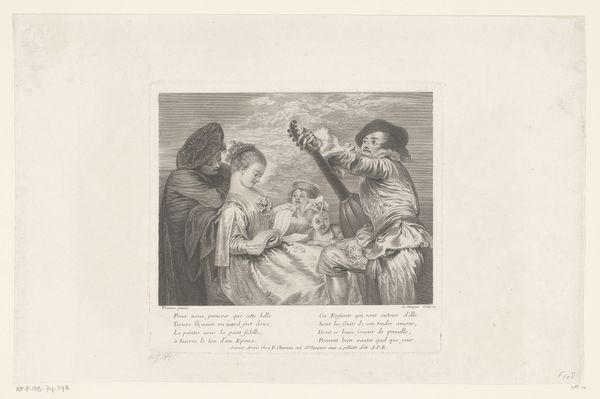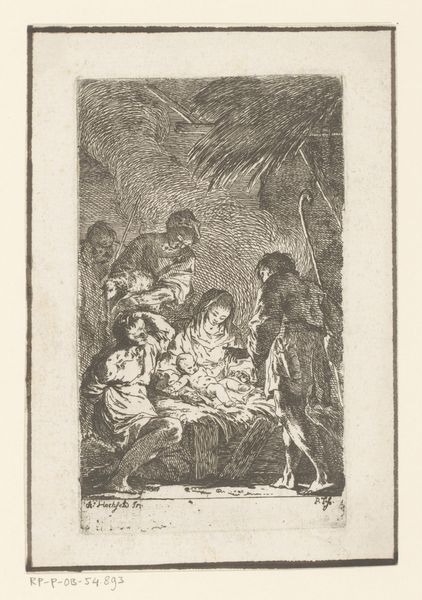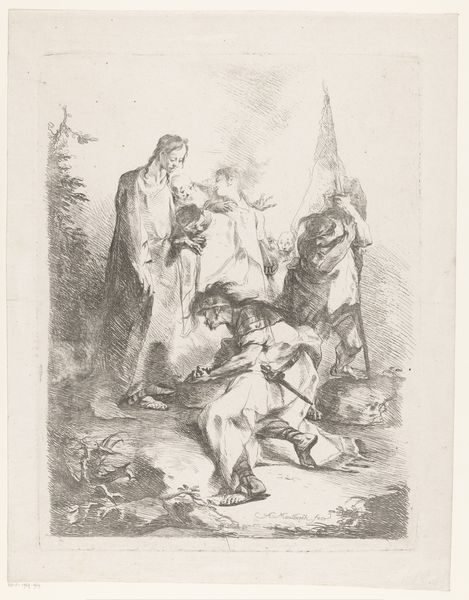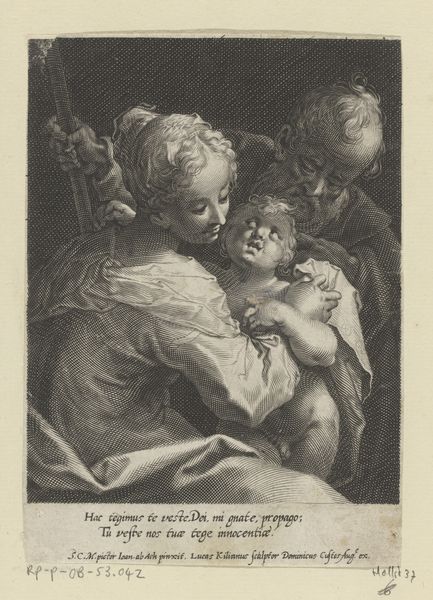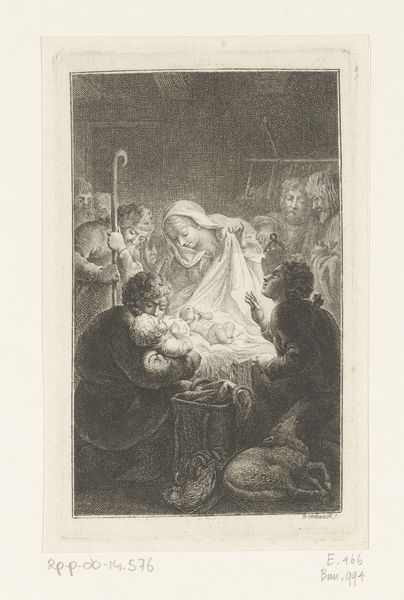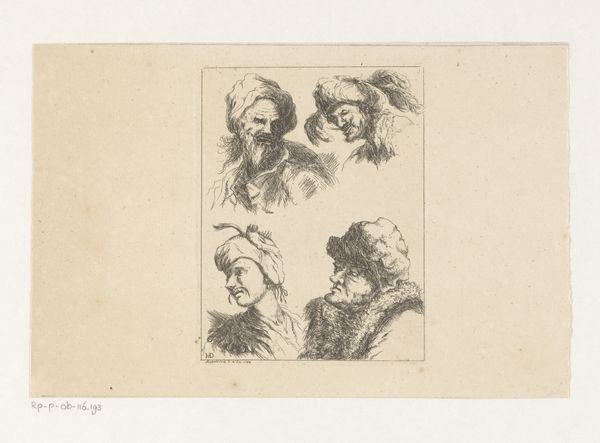
Compositie met negen hoofden van mannen en vrouwen van verschillende leeftijden 1817
0:00
0:00
print, etching
#
portrait
# print
#
etching
#
group-portraits
#
academic-art
#
realism
Dimensions: height 224 mm, width 270 mm
Copyright: Rijks Museum: Open Domain
Editor: This is "Compositie met negen hoofden van mannen en vrouwen van verschillende leeftijden," or "Composition with nine heads of men and women of various ages," made by Ignace-Joseph de Claussin in 1817. It’s an etching, so a print. There's an interesting mix of faces here – what do you see in this piece? Curator: I notice how this composition exemplifies the emerging emphasis on individuality within groups. We often consider portraits of royalty or nobility. However, this piece seems to celebrate the diverse faces and lived experiences within a community. It’s less about idealizing beauty and more about documenting reality. The varied ages, expressions, and perhaps social statuses hint at a broader societal representation. How do you think printmaking impacted the reach of such imagery? Editor: I suppose it allowed it to be accessible to a much wider audience. Were prints like this usually displayed, or were they more for private collections or study? Curator: That’s a complex question. Prints were certainly more accessible than paintings and played a role in circulating imagery, contributing to social discourse and awareness. Works such as these served didactic purposes in academic circles and acted as accessible artworks displayed at home. What do you think a piece like this contributes to our understanding of social structures in 1817? Editor: It feels like a snapshot of different parts of society at the time. Not just the powerful and wealthy. Curator: Precisely! The piece also represents the power of art being able to portray everyday humanity and become socially accessible through prints. That tension between realism and the democratisation of art is quite telling of the period. Editor: I hadn’t considered that – thank you for your insight. Curator: My pleasure.
Comments
No comments
Be the first to comment and join the conversation on the ultimate creative platform.
